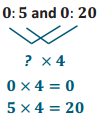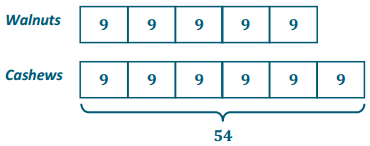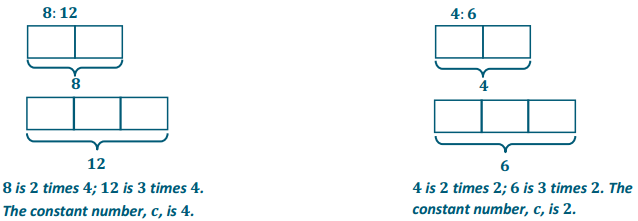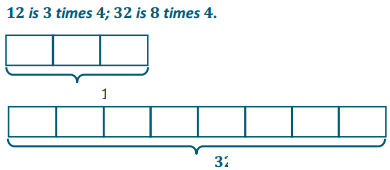Engage NY Eureka Math 6th Grade Module 1 Lesson 4 Answer Key
Eureka Math Grade 6 Module 1 Lesson 4 Example Answer Key
Example 1.
The morning announcements said that two out of every seven sixth-grade students In the school have an overdue library book. Jasmine said, “That would mean 24 of us have overdue books!” Grace argued, “No way. That is way too high.” How can you determine who is right?
Answer:
You would have to know the total number of sixth-grade students, and then see if the ratio 24: total is equivalent to 2: 7.

Answer:
Eureka Math Grade 6 Module 1 Lesson 4 Exercise Answer Key
Exercise 1.
Decide whether or not each of the following pairs of ratios is equivalent.
→ If the ratios are not equivalent, find a ratio that is equivalent to the first ratio.
→ If the ratios are equivalent, identify the nonzero number, c, that could be used to multiply each number of the first ratio by in order to get the numbers for the second ratio.
a. 6: 11 and 42: 88
________ Yes, the value, c, is ________
________ No, an equivalent ratio would be ________
Answer:

________ Yes, the value, c, is ________
x No, an equivalent ratio would be 42: 77
Answer:
b. 0: 5 and 0: 20
________ Yes, the value, c, is ________
________ No, an equivalent ratio would be ________
Answer:

x _ Yes, the value, c, is 4
________ No, an equivalent ratio would be ________
Exercise 2.
In a bag of mixed walnuts and cashews, the ratio of the number of walnuts to the number of cashews is 5: 6. Determine the number of walnuts that are in the bag if there are 54 cashews. Use a tape diagram to support your work. Justify your answer by showing that the new ratio you created of the number of walnuts to the number of cashews is equivalent to 5: 6.
Answer:

54 divided by 6 equals 9.
5 times 9 equals 45.
There are 45 walnuts in the bag.
The ratio of the number of walnuts to the number of cashews is 45: 54. That ratio is equivalent to 5: 6.

Answer:
Eureka Math Grade 6 Module 1 Lesson 4 Problem Set Answer Key
Question 1.
Use diagrams or the description of equivalent ratios to show that the ratios 2: 3, 4: 6, and 8: 12 are equivalent.
Answer:

Question 2.
Prove that 3: 8 is equivalent to 12: 32.
a. Use diagrams to support your answer.
Answer:

b. Use the description of equivalent ratios to support your answer.
Answer:
Answers will vary. Descriptions should include multiplicative comparisons, such as 12 is 3 times 4 and 32 is 8 times 4. The constant number, c, is 4.
Question 3.
The ratio of Isabella’s money to Shane’s money is 3: 11. If Isabella has $33, how much money do Shane and Isabella have together? Use diagrams to illustrate your answer.
Answer:
Isabella has $33, and Shane has $121. $33 + $121 = $154. Together, Isabella and Shane have $154. 00.

Eureka Math Grade 6 Module 1 Lesson 4 Exit Ticket Answer Key
Question 1.
There are 35 boys in the sixth grade. The number of girls in the sixth grade is 42. Lonnie says that means the ratio of the number of boys in the sixth grade to the number of girls in sixth grade is 5: 7. Is Lonnie correct? Show why or why not.
Answer:
No, Lonnie is not correct. The ratios 5:7 and 35:42 are not equivalent. They are not equivalent because 5 × 7 = 35, but 7 × 7 = 49, not 42.